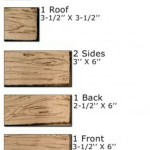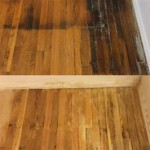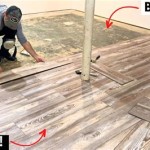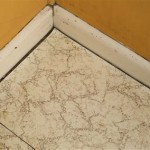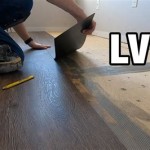Natural Stone Flooring Choices: A Comprehensive Guide
Natural stone flooring has been a hallmark of architectural design for centuries, prized for its durability, aesthetic appeal, and unique characteristics. The inherent variations in color, texture, and veining make each installation genuinely one-of-a-kind. Selecting the right natural stone for a flooring project, however, requires careful consideration of several factors, including the stone's properties, the intended application, and the desired aesthetic.
This article provides a comprehensive overview of various natural stone flooring choices, highlighting their characteristics, advantages, disadvantages, and suitability for different applications. Understanding these nuances is crucial for making an informed decision that ensures long-lasting beauty and functionality.
Understanding Key Stone Properties
Before delving into specific stone types, it's essential to understand the key properties that influence their performance as flooring. These include porosity, hardness, slip resistance, and maintenance requirements. Porosity refers to the amount of empty space within the stone. Higher porosity stones are more susceptible to staining and water damage and typically require sealing. Hardness, measured on the Mohs scale, indicates the stone's resistance to scratching and abrasion. Slip resistance, often measured by the coefficient of friction (COF), is crucial for safety, especially in wet areas. Finally, maintenance requirements vary depending on the stone type, affecting the long-term cost and effort involved in keeping the floor looking its best.
Different natural stones are formed through various geological processes, resulting in distinct compositions and characteristics. Igneous rocks, like granite, solidify from molten magma, resulting in dense, hard, and durable stones. Sedimentary rocks, such as limestone and travertine, are formed from accumulated sediments, leading to more porous and often softer stones. Metamorphic rocks, like marble and slate, are formed when existing rocks are transformed by heat and pressure, resulting in unique textures and patterns.
Knowing the geological origin of a stone helps predict its performance and maintenance requirements. For instance, a granite floor will generally be more resistant to staining and scratching than a limestone floor, but it may also be more expensive and require more specialized installation techniques.
Popular Natural Stone Flooring Options
Several natural stone types are commonly used for flooring, each offering a unique combination of aesthetic qualities and performance characteristics. This section explores some of the most popular options:
Granite:
A classic choice for flooring, granite is known for its exceptional durability and resistance to scratches, stains, and heat. Its hardness makes it suitable for high-traffic areas, and its wide range of colors and textures allows for versatile design options. Granite is relatively non-porous, but sealing is still recommended to prevent staining. Maintenance involves regular sweeping and mopping with a neutral cleaner. Granite tiles are often more budget-friendly, while granite slabs offer a more seamless and luxurious look.Marble:
Renowned for its elegant appearance and intricate veining, marble is a popular choice for creating sophisticated flooring. Marble is softer and more porous than granite, making it more susceptible to scratches and stains. It requires more frequent sealing and careful cleaning to maintain its beauty. Acidic substances, such as vinegar and lemon juice, should be avoided as they can etch the surface. Marble flooring is best suited for low-traffic areas where its delicate beauty can be appreciated without excessive wear and tear. Honed marble, with a matte finish, offers better slip resistance than polished marble.Limestone:
A sedimentary rock composed primarily of calcium carbonate, limestone offers a warm and natural aesthetic. Its relatively soft and porous nature makes it more susceptible to scratches and stains than granite or marble. Limestone requires regular sealing and careful cleaning. It's a good choice for areas where a natural, earthy look is desired, but it's not ideal for high-traffic areas or kitchens where spills are common. Tumbled limestone provides a textured surface that enhances slip resistance.Travertine:
Another sedimentary rock, travertine is characterized by its distinctive pitted surface, which is formed by gas bubbles during its formation. These pits can be filled or left unfilled, depending on the desired aesthetic and application. Travertine is relatively porous and requires sealing to prevent staining. It's a popular choice for bathrooms and entryways, offering a natural and slightly rustic look. Like limestone, it's not ideal for high-traffic areas or kitchens due to its susceptibility to staining and wear.Slate:
A metamorphic rock known for its layered appearance and natural cleft texture, slate offers a durable and slip-resistant flooring option. Its dark colors and textured surface make it a good choice for areas where water resistance and traction are important, such as entryways and bathrooms. Slate is relatively non-porous and requires minimal maintenance. It's also a good choice for outdoor applications due to its weather resistance. Sealing can enhance its stain resistance and bring out its natural colors.Quartzite:
This metamorphic rock is composed primarily of quartz, making it an exceptionally hard and durable flooring option. Quartzite is more resistant to scratching and staining than marble or limestone, but it can still be porous and require sealing. Its natural variations in color and veining add visual interest to any space. Quartzite is suitable for both residential and commercial applications where durability and aesthetics are important. It generally requires less maintenance than marble or limestone.Considerations for Installation and Maintenance
Proper installation is crucial for the longevity and performance of natural stone flooring. A level and stable subfloor is essential to prevent cracking and unevenness. The choice of mortar and grout should be compatible with the specific stone type. Experienced installers are familiar with the nuances of working with different stone materials and can ensure a professional and long-lasting installation.
Sealing is an important step in protecting natural stone flooring from staining and water damage. The type of sealant used should be appropriate for the specific stone type and its level of porosity. Penetrating sealants are generally recommended for porous stones, as they penetrate the surface and provide protection from within. Topical sealants create a protective layer on the surface of the stone, but they can wear down over time and may need to be reapplied. Regular cleaning with a neutral pH cleaner is essential for maintaining the beauty of natural stone flooring. Avoid using harsh chemicals or abrasive cleaners, as these can damage the surface of the stone.
Regular maintenance also includes sweeping or vacuuming to remove dirt and debris that can scratch the surface. For porous stones, spills should be cleaned up immediately to prevent staining. Depending on the stone type and the amount of traffic it receives, professional cleaning and sealing may be required every few years to maintain its optimal appearance and performance. Addressing any cracks or chips promptly will prevent further damage and extend the life of the floor. The specific cleaning and maintenance recommendations will vary depending on the type of natural stone used, so it's essential to consult with a professional or refer to the manufacturer's instructions.
Choosing natural stone flooring involves considering various factors, from the stone's inherent properties to the specific application and maintenance requirements. By understanding these nuances, homeowners and designers can make informed decisions that ensure a beautiful, durable, and long-lasting flooring solution.

10 Natural Stone Flooring Trends Quorn

10 Natural Stone Flooring Trends Quorn

Five Stunning Stone Kitchen Flooring Ideas Stamford At Home

10 Natural Stone Flooring Trends Quorn

Are Stone Floors Right For Your Home

Interior Natural Flagstone Ideas Grand River Stone

Homeowner S Guide To Natural Stone Flooring
:strip_icc()/101148070-93885e625924474b9432031e59052855.jpg?strip=all)
Your Guide To Natural Stone Flooring Ideas For Home

10 Natural Stone Flooring Trends Quorn

15 Stone Flooring Ideas To Try For Your Floor Plan Decoist
Related Posts


